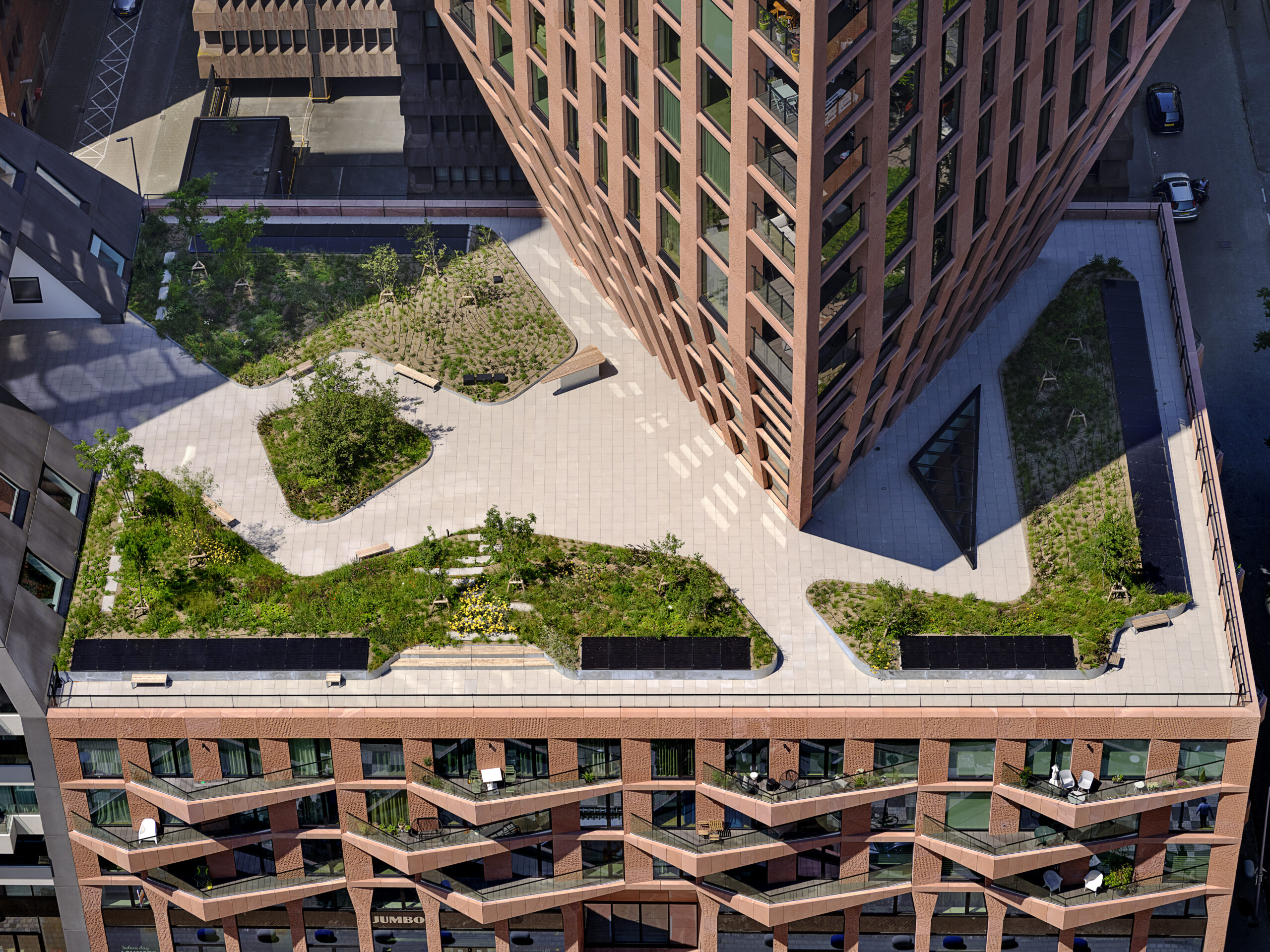CASANOVA
In 2013 Barcode Architects took initiative to develop a tower on the Wijnhaven 69 plot, where The Muse now stands. With an initial plan for the plot at Wijnhaven 69, we also managed to convince the developing party to buy Wijnhaven 65. And so this led to two residential towers designed in synergy with each other. As a result, CasaNova and the Muse share many common spaces, such as a collective rooftop garden and a kitchen, hotel rooms for guests, co-working spaces, meeting rooms, fitness area, and parcel service room.
The all-sided and recognisable triangular volume of CasaNova gives a new impetus to the Wijnhaven area, which is transforming from an anonymous office district into a lively part of the city centre. By activating the corner of Wijnhaven, a new enhanced connection is made between the Oude Haven and the Markthal, via the Leuvehaven and the Witte de Withstraat to Museumpark.
Location
Rotterdam, the Netherlands
Client
VOF Wijnhaven 65 & Wilma Wonen
Year
2017 – 2023
Status
Completed 2023
Size
22.000m²
Category
Residential / High rise / Mix-use
Collaborators
Pieters Bouwtechniek (structure), ABT (installations, building physics, fire safety, acoustics), SBB Ontwikkelen en Bouwen (construction), VVG (cost management), Jeroen Hamers Landschapsarchitectuur
Photography:
Hans Wilschut
Team
Dirk Peters, Caro van de Venne, Tim Brans, Wim Sjerps, Jelena Nikolic, Ilaria Ronchi, Cristóbal Middleton, Leire Baraja, Ellen Rouwendal, Beatrice Piola, Ruggero Pedrini, Jelmer Amory, Arthur Lachard, Piotr Kalbarczyk, Francesco Illuminati, Marta Falchi, Jordi Jorba, Andrea Durante
Sculpture on a plinth
The characteristic shape of CasaNova is a creative response to KCAP's urban plan, which stipulates that for every square metre of ground, 22m³ of building may be returned. The choice was made to cut away volume at the bottom and add volume at the top, so that it appears to balance on a pedestal, like a sculpture. The slender volume creates optimal sightlines and daylight in the surrounding buildings, and space for a 1,600m² roof garden where residents of CasaNova and The Muse can meet each other. By placing the roof garden on level five rather than on the roof the tower, the garden is also connected to the ground level.

Sculpting a facade
The idea of sculpting a tower is also reflected in the facade design. Hand-cut panels of reddish-brown natural stone give the tower an artisanal and warm character. As light changes, the strong relief in the stone constantly gives the building a new look. Towards the top of the tower, the panels get wider and wider, with smoothly polished flattening. The façade design slightly transforms up to the top of the building.


Sharing together
There has been great discussion about subversive behaviour and loneliness in skyscrapers, as well as the question of who are and might be the users of skyscrapers. In response, we have placed a strong focus on common areas and meeting spaces other than the atrium or the elevator. Programmatically, the two towers share the same plinth and provide the comfort of living in the city. The two-hundred residents of the two towers share a 1600m2 roof terrace with collective garden, kitchen, hotel rooms for guests, co-working spaces, meeting rooms, fitness area, and parcel service room.



Casual encounters
Casual encounters and informal conversation that come with them are essential to the sense of community, safety and social cohesion in the tower. An important design intervention was to make a cut between the car park and the residences. For many residents, the car park forms the daily entrance; from the car park you walk into CasaNova through an inviting atrium with a view to the roof terrace, and meet your neighbours before stepping into the lift.
CasaNova, together with The Muse, is an example of the network city, the city where buildings and communities are cleverly connected. No longer two-dimensional, but three-dimensional.







